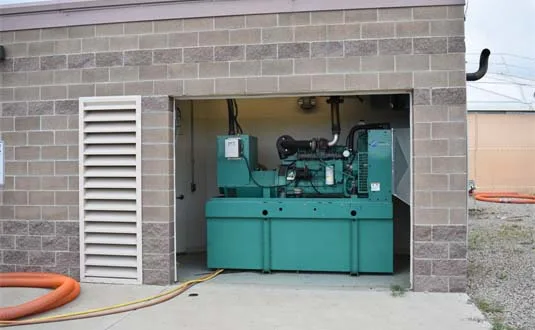Generators – Installation, Safety Precautions, and Regular Maintenance Schedule
Selecting a Generator

- In the case of a portable generator, only a limited number of appliances can be energized in the event of a power failure. It is essential to determine the ‘constant wattage’ which is the sum total of the wattages of each individual appliance that you seek to keep functional.
- Motor-driven appliances like refrigerators and air-conditioners require power as much as three times their constant wattage at the time of starting up. The chosen generator should meet or exceed the ‘constant wattage’ rating and have a ‘surge rating’ that exceeds the ‘start-up wattage’ requirements.
- Voltage ratings of the equipment and the appliances that you wish to operate should be matched.
Installation Procedures
- Upon unpacking the generator from shipping cartons, first conduct a thorough inspection to detect any damage that may have occurred during shipment.
- Check whether the rated amperage/wattage capacity of the unit is adequate to handle all the intended loads during a power outage.
- The unit should be placed outdoors in a protective enclosure, where sufficient air for cooling and ventilation is available in an unobstructed manner.
- The generator should be installed in close proximity to the location of the transfer switch and the fuel supply.
- A grounding lug is usually provided for grounding the frame and external conducting parts of the equipment.
- All batteries must be completely charged before they are inserted into the generator.
- Similar care must be ensured while unpacking and installing the transfer switch.
- The unit should be connected to the electrical system supplied by the utility only by means of the automatic transfer switch.
Safety Precautions
General Hazards
- Installation, repair, and maintenance should always be in accordance with the manufacturer’s instructions and recommendations.
- Exhaust fumes emitted by generator sets contain poisonous gases like carbon monoxide that can be life-threatening.
- The area around the generator must be clean and free of clutter and combustible materials.
- The equipment must be regularly inspected, and defective or damaged parts must be replaced in a timely manner.
- The unit should not be opened or dismantled while it is functioning.
Electrical Hazards
- All power voltage supplies should be turned off at the source while installing or servicing the generator.
- All electrical connections, such as wires, cables, and terminals, must be properly insulated and covered.
- The frame of the generator and any external conducting parts should have proper grounding/earthing wiring.
- Wiring, cables, and cord sets must be of the recommended capacity.

Fire and Explosion Hazards
- Smoking in the vicinity of the equipment can be fatal.
- Fuel or oil spills and the presence of combustible materials around the generator pose a risk of explosion.
- A fire extinguisher should be readily available.
Regular Maintenance Schedules
Annual, semi-annual, or quarterly maintenance schedules ought to be strictly followed to increase the reliability of the equipment.
- Inspect the cooling system, air intake system, and air cleaner.
- Check the fuel system, exhaust system, and electrical system.
- Change oil and filters annually.
- Inspect controls like voltage regulators, relays, and monitors.
- Adjust transfer switch time delays and reset exerciser clocks.
- Monitor performance parameters such as A.C. output and frequency.
Abiding by all guidelines detailed in the manual ensures the safe and optimum use of the product.